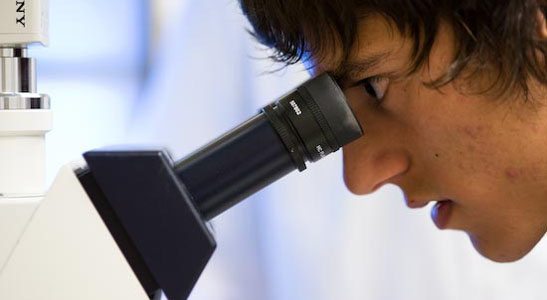The Translational Genomics Research Institute (TGen) today announced grant support from the Chan Zuckerberg Initiative (CZI) donor advised fund, an advised fund of the Silicon Valley Community Foundation, that will help revolutionize how researchers identify the genetic source of diseases and how best to treat each patient.
The human body contains trillions of individual cells. Inside each cell is a unique genetic code. Sequencing — or spelling out — the billions of data bits of an individual’s genetic code has relied, until recently, on sequencing multiple cells and using averages to get results. This new project will help enable researchers to get results by sequencing individual cells.
Led by TGen Director of Bioinformatics Dr. Jonathan Keats, and Assistant Professor Dr. Nicholas Banovich, the project will develop and test novel processing methods with the aim of creating the playbook used across all tissue types in the international Human Cell Atlas.
The grant to TGen was one of 38 announced simultaneously by CZI in support of the Human Cell Atlas, begun in 2016, to create comprehensive reference maps of all human cell-types for understanding human health and diagnosing, monitoring, and treating disease. Specifically, the TGen project will develop standard operating procedures for the processing and storage of solid tissues for single-cell RNA sequencing.
Single-cell RNA sequencing promises to enable researchers to more quickly and precisely identify the cellular processes underlying disease states and to predict if a diseased tissue will be susceptible, or resistant, to drug therapies and eventually lead to better patient care.
“What we do today is like mashing everything up in a blender and then taking the average, and you don’t know what the individual cells contributed,” said Dr. Keats, the project’s principal investigator. “But by applying genomic analysis to a single cell, it’s like you just turned on the lights in a dimly lit room and now you see all the detail beyond the one piece of furniture you could see previously.”
Sequencing analysis of a single cell makes it possible to discover mechanisms, including genetic evolution, not seen when studying a bulk population of cells. This is particularly important in the study of cancer as cells are constantly mutating, and these patterns of mutation can be observed using single-cell sequencing.
“Single cell genomics promises to deliver a paradigm shift in our understanding of cell-types, cell diversity, and how cells interact,” said Dr. Banovich. “By developing standards for the processing and storage of solid tissue in preparation for single-cell analysis, we hope to add value to all single-cell RNA studies and advance patient care.”
Creating standardized processing methods will ensure that meaningful molecular signatures represent real biology and not processing artifacts. This is especially critical for solid tumors, such as breast cancer, Dr. Keats explained. Blood tumors, such as leukemia, naturally exist as the free-floating single-cells required by the technology. But the processes we use today for breaking, dissociating and converting solid tumors into single cells in a liquid solution can change how genes are expressed within each cell.




